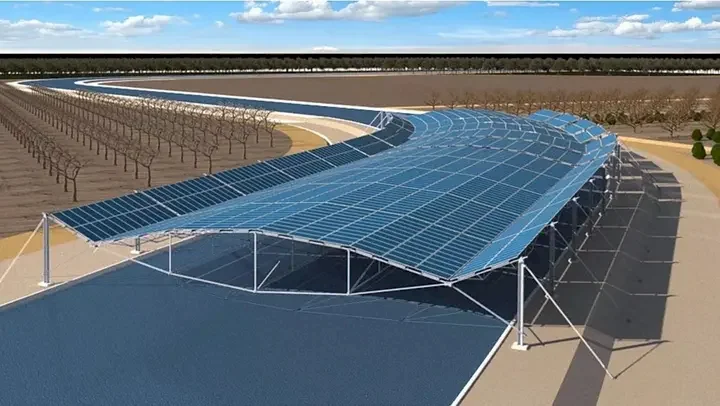
Japan Innovates Solar Panels Equivalent to the Power of 20 Nuclear Reactors
SadaNews - Japan is preparing for a silent wealth in the renewable energy sector led by advanced solar panels capable of generating energy equivalent to the output of 20 nuclear reactors.
In 2011, the Fukushima nuclear disaster changed the face of energy in Japan. The devastating earthquake and subsequent tsunami led to the collapse of the electricity network and a radioactive leak that forced more than 160,000 people to leave their homes.
But amid this darkness, a new hope emerged: the urgent need for clean energy. Since then, solar energy has witnessed rapid growth, accounting for about 10% of the country's total energy capacity today, according to the "Eco Portal" website.
Despite this progress, Japan faced a major challenge due to the limited space available for installing traditional solar panels. Here, the solution came through investing in the next generation of solar cells, known as "perovskite cells," which are more efficient and flexible, and can be installed on windows, building walls, and even car roofs.
Perovskite cells rely on iodine, of which Japan ranks second globally in production after Chile. This gives it the opportunity to secure an independent local supply chain, enhancing its economic security.
The Japanese government is also striving to regain its position in the solar energy market, after its share dwindled from 50% in 2004 to less than 1%, amid China's dominance in this sector.
Enormous Energy from Flexible Cells
According to the government energy plan, perovskite cells are expected to produce nearly 20 gigawatts of electricity by 2040, an amount equivalent to the output of 20 nuclear reactors.
These cells boast high efficiency, theoretically reaching 43%, compared to only 29% for traditional silicon cells, making them an ideal choice to accelerate the transition to renewable energy.
Despite the immense potential, there are still technical challenges regarding the durability, longevity, and cost of perovskite cells. Japanese companies like "Sekisui Chemical" are working on their commercial development, but forecasts suggest that the world will not see widespread adoption before 2030.
As Japan continues to develop other solar technologies in parallel, it seems that perovskite cells represent the true gateway to a clean and sustainable energy future.
If it succeeds in overcoming these obstacles, Japan will not only have jumped into the 22nd century, but will have drawn the outlines of the energy future for the entire world.

Predictions for a Decline in Global Smartphone Shipments in 2026

US Congress Launches Investigation into the Use of Ticks as Biological Weapons

Russia Develops Fuel That Provides Energy for a Thousand Years

10 Daily Habits that Waste Time and Energy

7 Exercises to Strengthen Your Calf Muscles

Creative Commons Organization Supports "Pay-Per-Crawl" Systems to Compensate Content in th...

Tea and Cocoa Reduce Health Issues Caused by Sitting for Long Hours

